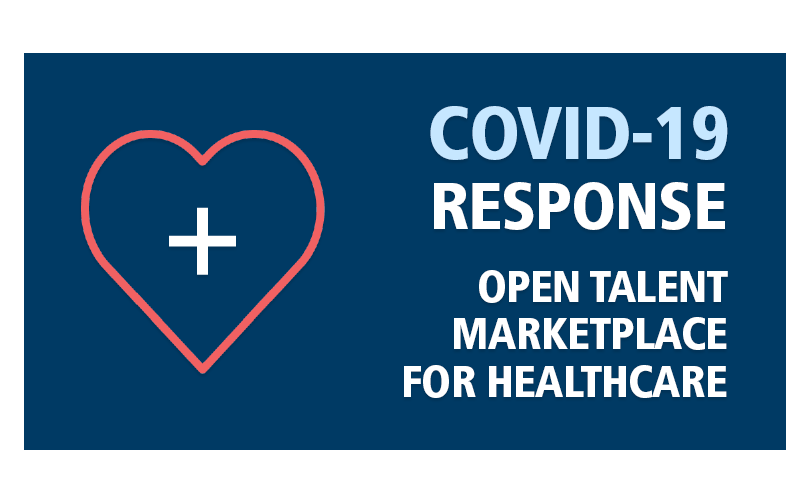
Looking Back on Two Pandemic Years
How Far We’ve Come & What We’ve Learned About COVID
When the World Health Organization (WHO) declared COVID-19 to be global pandemic on March 11, 2020, no one could have predicted what would happen in the weeks and months to come.
Two years and several major variants of COVID-19 later, the U.S. healthcare system has grappled with numerous challenges, and it continues to do so. The stark images of isolation units filled with critically ill COVID patients on ventilators, and the trauma of those lost, will undoubtedly remain vivid in the memories of hospital staffers for a long time.
Even now, community transmission of the virus remains high, according to the American Hospital Association’s most recent COVID-19 Snapshot, and many hospitals are still functioning with high capacity.
Here’s a look at how far we’ve come in the past two years – and what we still need to focus on.
What we’ve learned about the novel coronavirus
At the beginning of the pandemic, we knew that the SARS-CoV-2 virus caused the disease known as COVID-19. But so much was unknown about this new infectious disease, including details about symptomology and transmission, and panic often prevailed.
Today, two years later, the scientific and medical community knows much more about COVID, including how it spreads. We know more about common and less common symptoms. We have several effective vaccinations and a new oral anti-viral treatment available to treat COVID, and research continues into more treatments. This knowledge helped create more strategic protocols, which are helping deliver better care for patients.
However, we still have a ways to go, as we’re still learning about reinfection and post-acute sequelae of SARS CoV-2 infection (PASC), better known as long COVID.
What we’ve learned about COVID safety and care protocols
National shortages of personal protective equipment (PPE) complicated an already dire situation for many healthcare organizations, as they struggled to procure PPE and staffers struggled to care for patients without adequate protection.
No one wants to be caught off guard if and when the next crisis hits. Some health officials are calling for proactive planning now. For example, in California, health officials are developing plans for stockpiling masks and other PPE, as well as creating plans for expanded testing, vaccination and other measures that could be deployed if another major COVID variant arrives. And many organizations have learned valuable lessons about coping with an unexpected increase in demand for services and refining their disaster preparedness plans for the future.
Regaining patients’ trust must be prioritized
Before the pandemic, patient mistrust in the healthcare system was already a concern. The pandemic exacerbated the problem for many. The politicization of COVID prevention strategies such as masking and vaccination generated mistrust among some people, and misinformation was rampant. To compound the problem, messages about COVID from public health officials and government agencies were sometimes confusing.
Rebuilding relationships with patients and rebuilding trust in healthcare must be a priority moving forward, according to a JAMA commentary. And Dawn Allbee, executive director of customer engagement at the Joint Commission Center for Transforming Healthcare, emphasized the importance of building a culture of safety in a column for MedPage Today. “A strong safety culture is associated with positive patient outcomes, improved quality, patient satisfaction, staff engagement and retention, and even financial strength,” she wrote.
Repairing trust won’t be a quick fix. But leaders must be deliberate about it. As a Feb. 2021 column in Health Affairs suggested, “Adding a ‘trust impact assessment’ to decision-making could provide a needed added sanity-check to organizations as they make decisions about a variety of relevant activities.”

Healthcare staffing shortages must be addressed
The ongoing labor shortage (and the problems like burnout that have contributed to it) is one of the biggest challenges that healthcare organizations are facing now--and will continue to face.
Registered nurses were already in short supply well before the pandemic began, as a report in Nursing Economics noted. But as the pandemic rolled on, the nursing workforce shortage hit a crisis point--and then got worse. Vacancies began appearing for other healthcare jobs, too, with healthcare organizations struggling to staff them.
Financial pressures are usually the No. 1 challenge cited by hospital leaders, according to the American College of Healthcare Executives (ACHE). But not this year. According to the results of ACHE’s recent survey of hospital CEOs, personnel shortages took the top spot on their list of concerns.
For more than 35 years, AMN Healthcare has been supporting hospitals, health systems and practices across the U.S. with a wide range of clinical talent and workforce solutions.
CONTACT AMN about your healthcare staffing and workforce needs.



